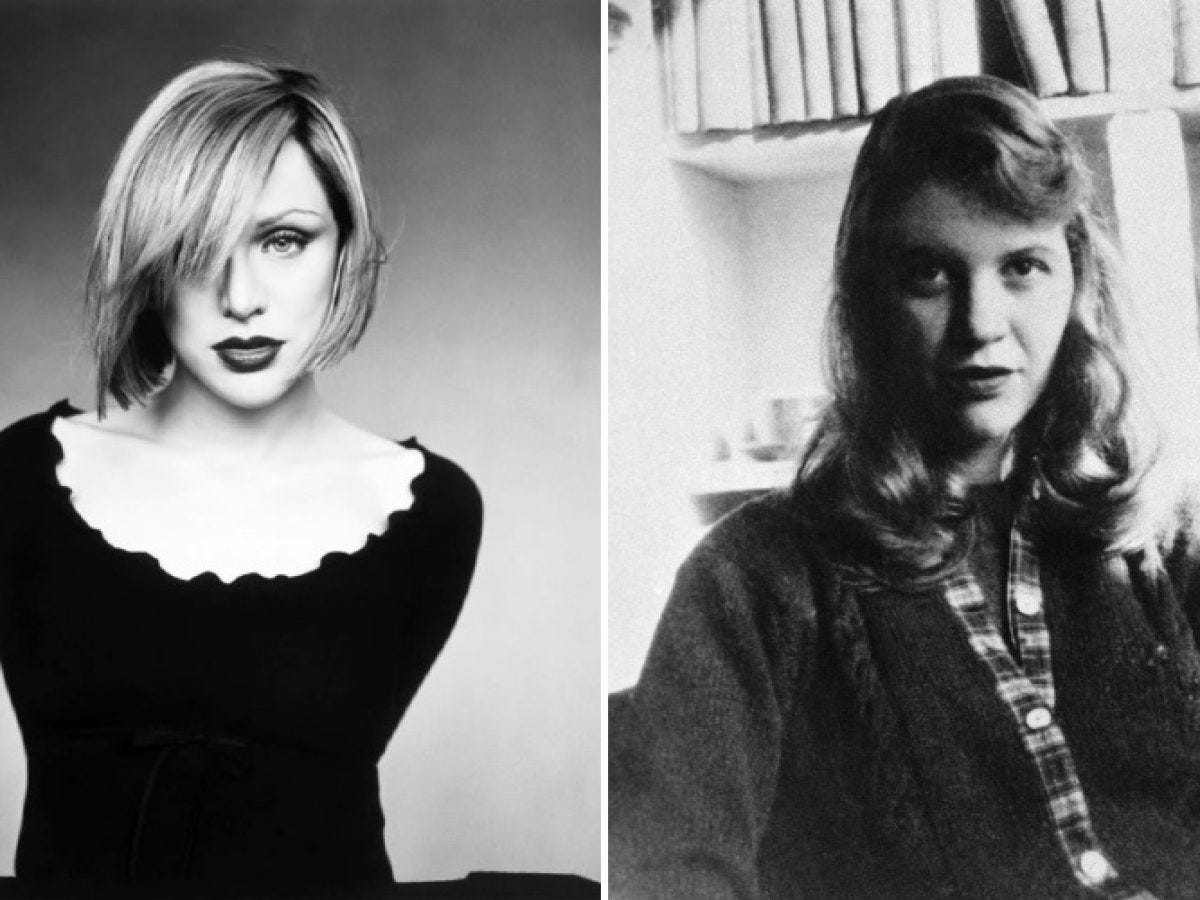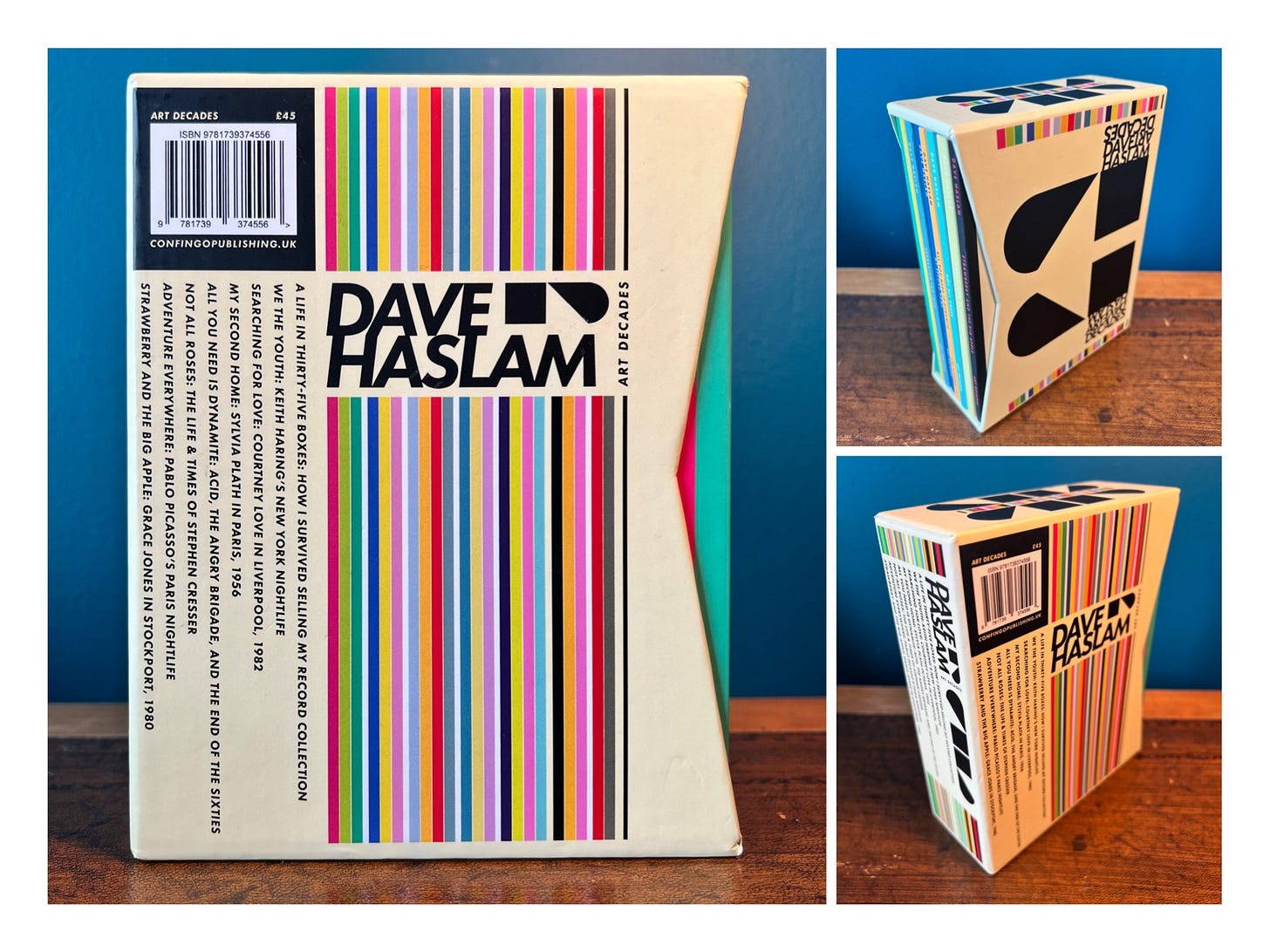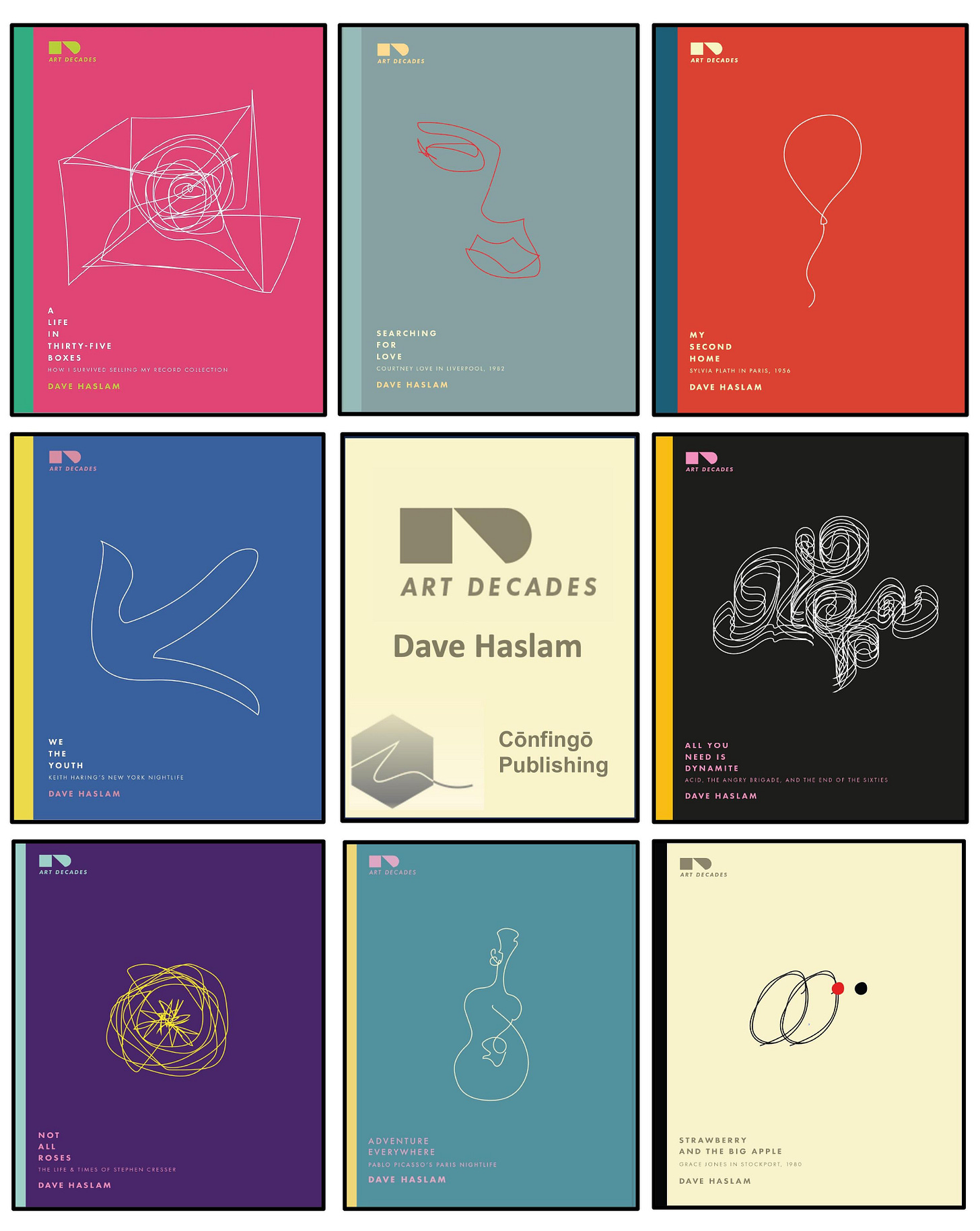The end of the series
And a fantastic ending too...
Strawberry and the Big Apple: Grace Jones in Stockport, 1980 - is the eighth book in my Art Decades small format series - the eighth and last. A writing project that’s been a joy to do. A series described by the broadcaster James O’Brien as “Really lovely editions and beautifully written”.
The idea of a short format series was born in 2018, after a conversation with my agent who wondered if I had ideas for another big book, to follow-up the five I’d published - I mean, another usual sized book (ninety thousand words long, say), and I had lots, so I sent him three of the ideas, all of which he liked.
He wanted me to choose between the ideas, so he could approach major publishers with a view to securing a deal. But all three appealed to me, and would be great to research. I wondered if there was another route to sharing these works with readers; I suggested maybe I could turn those ideas - and perhaps more - into smaller volumes - maybe twelve thousand words each. And perhaps go indie. He also told me being signed to a small-scale clout-free publisher, and the pocket size of the books, their length and their eclectic contents would all be a barrier to them being reviewed or stocked by bookshops.
I think he thought I was being unambitious not wanting to spend three or four years writing another book for a major publisher; but, to my mind, I was being ambitious, but in a different way. I’d devised an alternative format for my writing, outside the norms of publishing; a weird idea (although I think I used the word “pioneering”).
I had an analogy. The short format books are like singles. A usual sized book is an album. Singles can be a joy, they catch a moment. Their brevity doesn’t mean they can’t have the meaning or impact of an album. I pointed to ‘Ever Fallen in Love (With Someone You Shouldn't've)’; in two and a half minutes it says more about the human condition (relentless confusion) than ninety-five per cent of all hour-long albums ever released.
Claiming some affinity to one of the greatest singles ever made???? Now he knew I was ambitious.
I sat down with local publishers Confingo, a publishing company based close to my house which had focussed mainly on producing beautifully designed occasional magazines of poetry and short stories.
A plan was three-quarters made. We decided we’d work on eight books, with quality cover designs, and they’d be limited editions.
My agent agreed to waive his percentage. He had come round to the idea it was a cult project and knew it wasn’t likely to be an earner. He pointed out it was a little bit like an extension of my Debris fanzine back in the 1980s - where interviews with the likes of Sonic Youth were followed with articles about film directors, poets, or politics.
Maybe he was right. But also - if you’ll forgive me for suddenly plunging very deep - I was considering the way a sense of my own mortality keeps nudging me. I’m writing this close to the first anniversary of the death of Mark Stewart of the Pop Group, one of my all-time favourites, an inspiring man, who died the age I am now. I’m in a hurry to bring ideas to life, get words written down, and my work shared.
Book one was A Life in Thirty-Five Boxes: How I Survived Selling My Record Collection. This first one is the only obviously autobiographical of the eight; it includes my thoughts on the collecting impulse, and tries to explain how and why I came to sell four and a half thousand records to DJ Seth Troxler.
At the outset of the series I didn’t know exactly what all eight subjects were going to be - apart from the record collection one - but I knew that three others would be about the poet Sylvia Plath, artist Keith Haring, and the post-Sixties British terrorist group the Angry Brigade - three subjects I’d always wanted to find a way and an opportunity to write about.
The subjects in the Art Decades series - which also include Pablo Picasso and Courtney Love - seem random but I didn’t aim deliberately for them to be so. The decision to embark on each of the books was down to a curiosity and a passion for a subject, and an eagerness to share stories and ideas with readers.
I’m looking back on the series, now it’s completed. Threads and themes have emerged. Recurring interest in the power of our formative years to set the tone of our lives, and the role of certain cities and certain sites in cities (music venues, record shops, boutiques) in inspiring or nurturing creativity.
The connections between two of the books especially - Courtney Love in Liverpool and Sylvia Plath in Paris – intrigued me. Two young American women who’d faced broken early lives, making their first visit to Europe, and finding themselves in locations that seemed to offer up a pathway to unlocking their voice and give vent to their distress and anger, and more.
The approach I took writing the Courtney Love book was inspired by film-maker Carol Morley who told her own story in The Alcohol Years by filming people who knew her, and building up her biography without appearing or talking on screen. I did the same, interviewing people in Liverpool about their memories of Courtney - although I did also include information and stories told by Courtney in interviews. Courtney was very wary about my project - at one point, her wariness shaded into anger - but, fortunately, once she’d read it she declared it “a lovely book”, and we exchanged some emails and had a Christmas video chat.
My Second Home: Sylvia Plath in Paris, 1956 is my favourite of the eight books in the series. The nearest any of the books managed to get to perfection - or to ‘Ever Fallen in Love (With Someone You Shouldn't've)’, which is maybe the same thing.
People began to buy each of the books regardless of how much knowledge ot interest they had in the subject - on the strength of how much they enjoyed my writing and appreciated the short format. It’s wonderful for readers to show that level of trust in what you do.
Talking of trust, I’m very grateful for Steve Cresser for trusting me to tell his story in book six of the series. I first met Cressa in the mid-1980s when he was described in ID magazine as “the face of Manchester”, a cool dude indeed. But in the the 2000s he struggled with various hardships - heroin addiction led to an extended period of homelessness.
Cressa trusted me to tell his story. His 80s life, right through to the bleak bleak evenings with a plastic cup begging outside venues where he’d once been on the guest list. It’s such an honest, brutal, book that gives hope too.
Researching Picasso for book seven increased my admiration for people in his orbit - Guillaume Apollinaire, Dora Maar - but I didn’t warm to him as a human being. But the ideas and attitudes of the Paris radicals in the first decades of the Twentieth Century were fascinating and an inspiration. The last few pages of the Picasso book are something of a personal manifesto for me.
I’m writing non-fiction but I don’t feel much affinity to works of academic theory, or dry encyclopaedic documenting. In fact, I like to think my books read a little like novels, readers becoming invested in the characters, intrigued by the story, interested in finding out motivations, the conclusions to the story and so on. The stories are moving; there are some very emotional passages in many of the books in the series. They’re not objective. I fell in love with Keith Haring writing the book about him. I walked the streets of Paris with Plath. I ended-up, slightly to my own surprise, firmly in #TeamCourtney.
Over the last few months I’ve worked with the publishers and the designer Zoe McLean to create a box for them, a collection. To bring them together, give them shape. My agent was right, the project has not been lucrative, and it’s too under-the-radar but also I was right too; I’ve written books from the heart and they’ve made an impact on thousands of readers. I believe if you create something with love and care, then people will respond in a similar way. I’m proud of the books and the box is a beautiful thing
Single titles or the box set are available here - CONFINGO PUBLISHING







